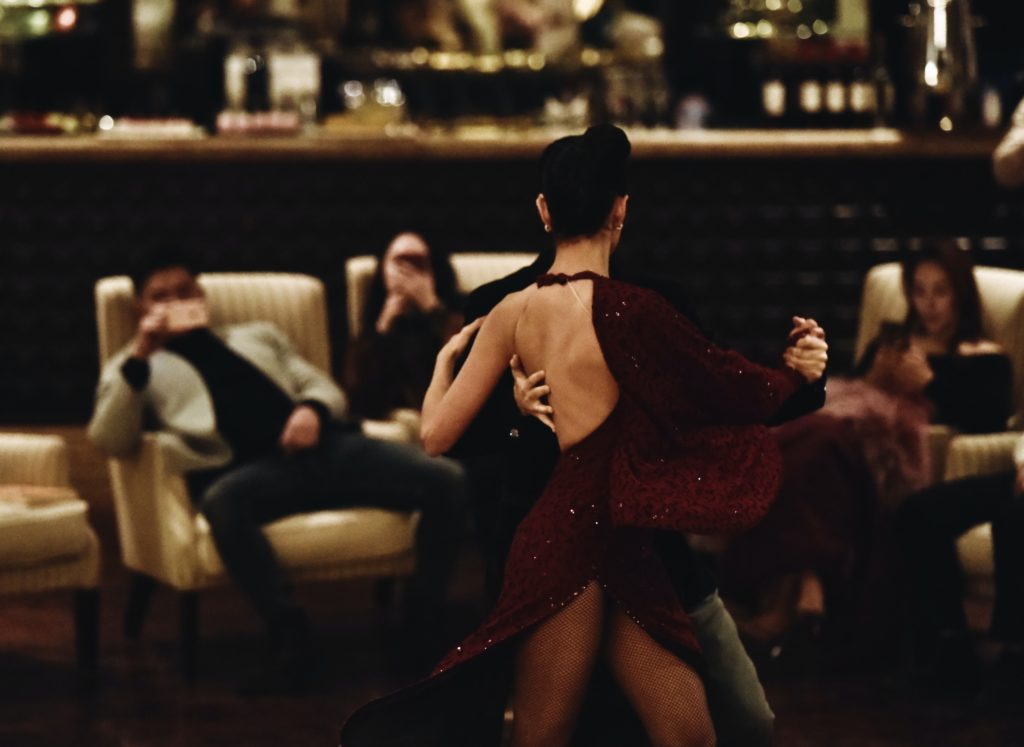Would you like to share a dance? Of course you would. But what dance are we talking about, and do you and your partner even know the moves? Let’s start from the beginning and start working together. Here are some of the most popular dances that you can learn and perfect with a partner.
Tango
This is possibly one of the most popular, exciting, and romantic dances in the world. Born in Argentina in the latter part of the 19th century, the Tango comes from a convergence of cultures that saw European waltzes meeting native South American ceremonial dances and melding with the candombe celebration traditions from just across the Rio de la Plata of Uruguayans with African ancestors. This dance is defined by its rich and dramatic gestures and stylized moves which are executed to incredibly heartfelt music played with great élan by some of the most soulful musicians alive. Tango is an entire experience, and nobody who has ever watched it done or taken instruction in it will ever forget the impact of its passionate beauty.
Waltz
Born in the misty backwoods of 16th century Europe, this dance started its life as a near-mythical folk dance, spoken of in manuscripts but never formalized. That all changed just before the Age of Napoleon, when the Waltz took Viennese high society by storm, and in doing so became ground zero for the world of ballroom dance. In its simplest definition, the Waltz is a closed-form couples dance that is performed to music played in 3/4 time. This gives the dance its distinctive one-two-three, one-two-three, one-two-three rhythm. Some of the most famous waltzes can be heard in the music of Russian composer Pyotr Tchaikovski, whose Swan Lake brings the Waltz off of the ballroom floor and up onto the big stage of grande ballet.
Foxtrot
This competition-recognized throwback to the heady days of vaudeville in the early 20th century, the Foxtrot is an American dance whose style was born in the first age of Jazz. Sharing a lot of moves with the Waltz, the Foxtrot is danced in 4/4, or common, time instead of the 3/4 favored by its European cousin. A little older than Swing dancing and a little younger than the Tango, this light-hearted dance has been massively popular since the ragtime-era, during which it seemed that every tune was written for it exclusively. Although more than a century old, the Foxtrot still has its legions of admirers, and shows no signs of slowing down.
Rumba
Although there are a lot of definitions, styles, and origins that go into the story of this once-humble Cuban dance, when most people mention the Rumba in North America, they are talking about the ballroom rumba. Slower than a lot of other Latin dances like Salsa or its sibling the Bolero, the Rumba focuses on smoothness and can come across as a little more formal at times. However, once you get the moves down, it’s perfectly okay to loosen up a bit outside of the classroom (or ballroom) and return this Cuban beauty to its party dance origins.
Regional Mexican and Contemporary Latin Dances
With the massive worldwide success of the Caribbean musical genre Reggaeton and crossover Latin pop acts like Pitbull tearing up the charts, we are living in the boom times for Latin dances. But where to get started? We suggest that you look into the world of regional Mexican dances, which apart from being performed to some seriously good dance music (like the polka-flavored Norteño style of Northern Mexico), is also chock full of some excellent couples dances. Huapango is both a musical style as well as a couples dance. The music is often rhythmically complex, with the triple meters corresponding to the steps of the dance. The name Huapango itself comes from the Nahuatl word for on top of wood, referencing the wooden platforms upon which the dance is performed, the dancer’s steps adding percussive flavor to the mix. If you are in the mood for something a little simpler but nonetheless expressive music, Corridos have a rich place in Mexican culture, and have even been found as a crossover style in South America. The music is essentially a ballad, sung to the accompaniment of guitars and sometimes violin and horns, while the dance is a closed-form couples dance that mixes two-steps, hops and spins to weave a story as expressive as the one being sung on stage.


Exploring the Fundamentals of Ballroom
If you’re interested in learning more about Latin dance and ballroom, check out Paul Karmiryan’s Latin Ballroom Fundamentals class in our on-demand library! In this intro class, Paul will demonstrate the posture, isolations, and hip work needed to master the Cha-Cha and Rumba. Head to clistudios.com to start your 7-day free trial today.

